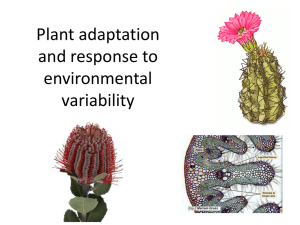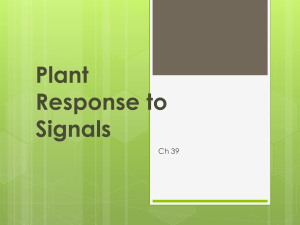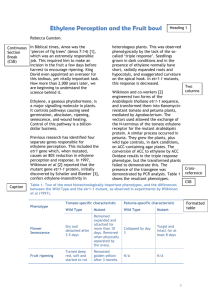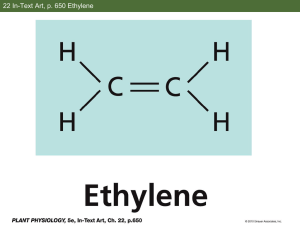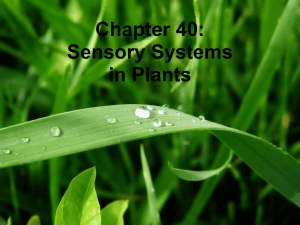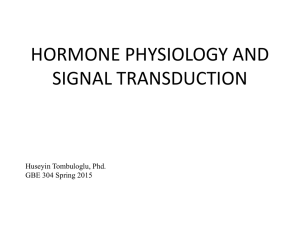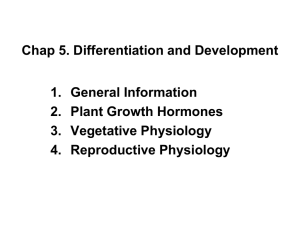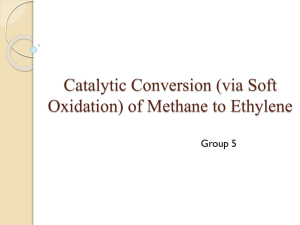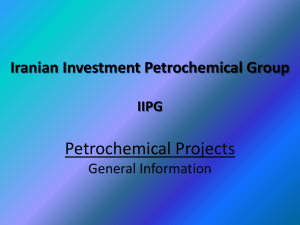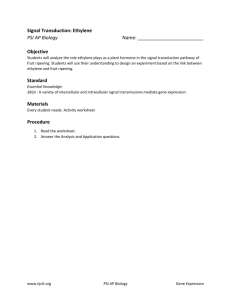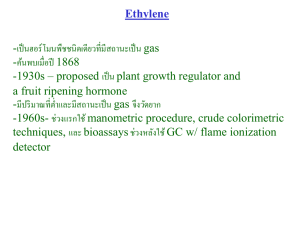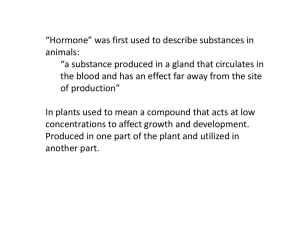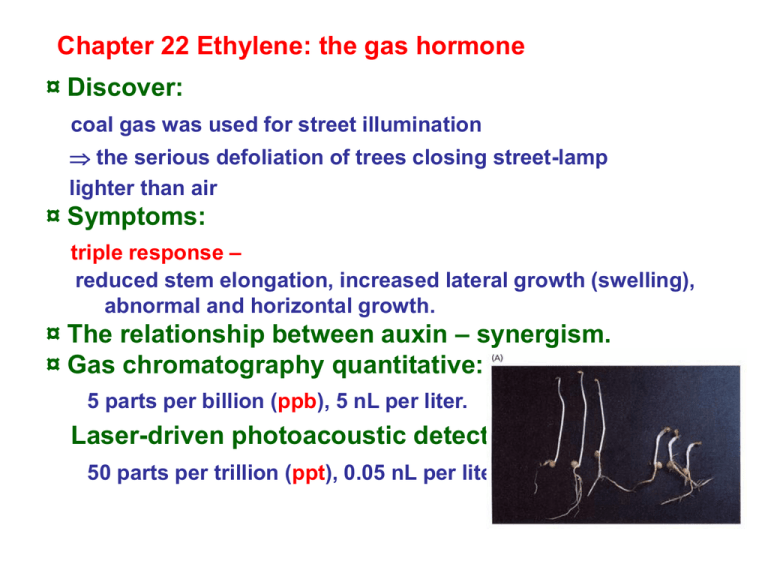
Chapter 22 Ethylene: the gas hormone
¤ Discover:
coal gas was used for street illumination
the serious defoliation of trees closing street-lamp
lighter than air
¤ Symptoms:
triple response –
reduced stem elongation, increased lateral growth (swelling),
abnormal and horizontal growth.
¤ The relationship between auxin – synergism.
¤ Gas chromatography quantitative:
5 parts per billion (ppb), 5 nL per liter.
Laser-driven photoacoustic detector:
50 parts per trillion (ppt), 0.05 nL per liter.
Ethylene biosynthesis
meristematic regions and nodal regions
during leaf abscission and flower senescence, as
well as during fruit ripening
physiological stresses: wounding, flooding, chilling,
disease, temperature or drought, etc.
Sources:
gymnosperms and lower plants, bacteria, fungi
even marine sponge and cultured mammalian cells
can respond to ethylene.
the biologically active concentration: 1L L-1.
CO2
(p. 572)
Absorbent:
Exogenous
ACC,
ethephon
(p. 584)
alkaline KMnO4
Major:
Minor: GACC, 1-(-L-glutamylamino)
cyclopropane-1-carboxylic acid
ACC synthase:
an unstable, low amounts (0.0001%), and cytosolic enzyme.
a divergent multigene family, at least nine genes in tomato, which are
regulated by various inducers, such as auxin, wounding, and/or fruit ripening.
inhibitors: aminoethoxy-vinyl-glycine (AVG),
aminooxyacetic acid (AOA),
inhibit the cofactor – pyridoxal phosphate, of ACC synthase.
ACC oxidase: (ethylene forming enzyme)
the rate-limiting step in the ethylene biosynthesis.
require ferrous (Fe2+) and ascorbate for activity.
low abundance and cofactors requirement difficult purification.
a multigene family that is differentially activated by fruit ripening and flower
senescence, and inhibited by cobalt ion (Co2+) and anaerobiosis.
Promote ethylene
biosynthesis
¤ developmental state:
maturation; application of ACC to unripe fruits.
¤ environmental conditions:
bio- and abiotic stress ethylene.
¤ plant hormones
auxin:
auxin ACC synthase ethylene production
auxin-induced responses is mediated by ethylene.
cytokinin:
promote ethylene production triple-response
increase the stability and/or activity of one isoform of
ACC synthase – carboxy-terminal domain.
cytokinin have synergistic influence on auxins–induced ethylene
production.
¤ circadian: peaking during the day and reaching a minimum at night
Inhibit ethylene production and action
To distinguish between different hormones that have identical
effects or
a hormone affects the synthesis or action of another hormone
auxin and ethylene causing epinasty
ethylene is the primary effector of epinasty and auxin acts
indirectly by
causing a substantial increase in ethylene production.
inhibitors of ethylene synthesis
AVG, AOA, Co2+
inhibitors of ethylene action
Silver ions (AgNO3 or Ag (S2O3)23-)
carbon dioxide (5~10%) –antagonist, less efficient than silver
ions.
trans-cyclooctene
1-methylcyclopropene (MCP)
remove ethylene
alkaline potassium permanganate
lysophospatidylethanolamine
Ethylene affect development and
physiology
¤ promotes the ripening of some fruits
¤ leaf epinasty
¤ induces lateral cell expansion
¤ maintains the hooks of dark-growing seedling
¤ break seed and bud dormancy in some species
(abscisci acid)
¤ the formation of roots and root hairs
¤ induces flowering in the pineapple family and mango
(inhibits flowering in many species, changes the sex of developing
flowers)
¤ enhances the rate of leaf and flower senescence
¤ defense response (jasmonic acid)
¤ abscission zone formation
Promotes the ripening of some
fruits
¤ Ripening:
the enzymatic breakdown of the cell wall; starch hydrolysis; sugar
accumulation; organic acids and phenolic compounds (tannins)
disappear; chlorophyll loss and anthocyanins and carotenoids
accumulation; aroma and flavor components produced; drying for some
fruits.
¤ Climacteric (N. or adj)
the fruits that ripen in response to ethylene exhibit a characteristic
respiratory
rise before the ripening phase
¤ Autoctalytic
treatment with ethylene induces the
fruit to produce additional ethylene
¤ Nonclimacteric (adj) fruits
do not exhibit the respiration
and ethylene production
banana
Leaf and flower
senescence
Silver thiosulfate: a potent inhibitor of ethylene action
Copper cofactor requirement
for high-affinity ethylene bind to its receptor
Ethylene: accelerate
Cytokinin: delay
ABA: Ch. 23
Flooding (waterlogging) or anaerobic condition around the root
Ethylene production in shoot, epinastic response
ACC is transportable
( in the xylem)
Ethylene can not be
transported
(in the petiole)

